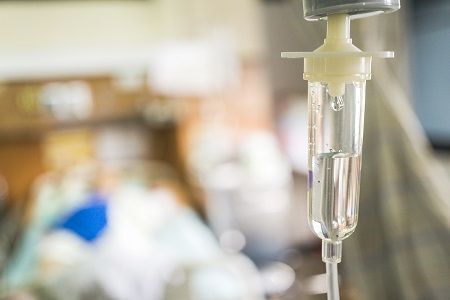Article
Eravacycline Improves Regimen for Oral, IV Treatment of cUTI
Author(s):
Treated in hospital settings, cUTI has been traditionally treated with quinolones due to a patient’s ability to transfer from IV to oral form when they’re discharged.
A dosing regimen of oral eravacycline for complicated urinary tract infection (cUTI) has moved on to phase 2 clinical testing.

The optimized intravenous (IV)-to-oral dosing regimen of eravacycline uncovered in the first study a recently-completed phase 1 trial has led to Tetraphase Pharmaceuticals’ decision to move toward a phase 2 patient trial for cUTI treatment.
Tetraphase announced the decision, along with the phase 1 data results, at IDWeek 2017 in San Diego, CA.
Eravacycline, a novel, synthetic fluorocycline antibiotic developed for treating serious infections, is also being investigated for treating possibly lethal multidrug-resistant (MDR) infections. The IV program for the investigational drug includes 2 phase 3 clinical trials for complicated intra-abdominal infections, as well as a phase 3 cUTI clinical trial.
Treated in hospital settings, cUTI has been traditionally treated with quinolones due to a patient’s ability to transfer from IV to oral form when they’re discharged, Tetraphase Chief Medical Officer Patrick Horn, MD, PhD, told MD Magazine.
“With the rising rates of quinolone resistance, treatment options are limited and the alternative is for the patient to stay in the hospital for the entire treatment period on an IV treatment dosed 3 times a day,” Horn said.
The oral eravacycline program is under development, designed to gauge an optimized IV-to-oral transition therapy of the treatment. Not only did the phase 1 program establish an oral dosing regimen — it proved an “expected therapeutic range” and efficacy of once-daily IV eravacycline for cUTI, Guy Macdonald, Tetraphase president and chief executive officer, said.
“We are encouraged by the clinical data in healthy volunteers we have recently seen in the phase 1 oral eravacycline development program and are eager to initiate the next step of evaluating the optimized IV-to-oral dosing regimen in a patient population," Macdonald said.
The phase 1 data presented at IDWeek evaluated the plasma and urine levels achieved in patients taking the IV-to-oral dosing regimen, and compared the levels to those reported using the same dosing regimen under fasted conditions in the phase 3 study. Researchers randomized 16 volunteers into fasted/fed or fed/fasted eravacycline sequences.
Patients were given dosing regimens of 1.5 mg/kg IV once daily and on Days 1-3, then 200 mg oral twice daily from Days 3-7. In the fasted period, drug exposures at the end of treatment were 65% of those achieved after the first IV dose. In the fed period, end-of-treatment drug exposures 39% of those achieved after the first IV dose.
The fasted period reported both a drug exposure and urine concentration within therapeutic range, while the fed period did not. The drug exposures achieved with the oral dose were 81% of those achieved with IV dosing, a notable achievement, Horn said.
“With an IV-to-oral treatment, it is important to maintain drug levels with the oral dosing in order to sustain the response to the infection,” Horn said.
The once-daily IV antibiotic form of the drug is currently being evaluated in the IGNITE3 phase 3 clinical trial. Its data is expected to be publicly shared in the first quarter of 2018. If successful, it could support a supplemental new drug application filing with the US Food and Drug Administration for next year, Horn said.
“We believe that once-daily IV eravacycline could represent an important new treatment option for cUTI, particularly for patients at risk for drug-resistant infections, in hospital and outpatient settings,” Horn said. “Being able to introduce a future IV-to-oral dosing regimen would also be a significant addition to the treatment of cUTI and we will continue to advance the oral eravacycline program in order to achieve that goal.”




